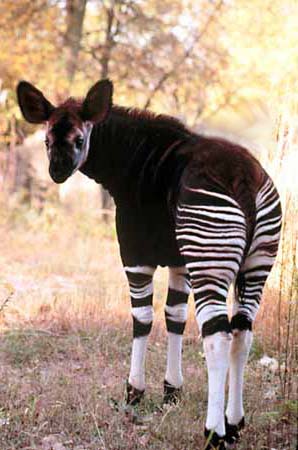 Okapi Endangered Animal Wallpaper
Okapi Endangered Animal WallpaperGestation When okapis are pregnant, they retreat into dense forest to give birth. The last official sighting there dates to 1959, almost five decades ago. Recently, scientists have uncovered evidence that okapis may also be surviving in the Congo's Virunga National Park.
 Young Okapi Endangered Animal Pictures
Young Okapi Endangered Animal Pictures Okapi Endangered Animal Photos
Okapi Endangered Animal PhotosThe okapi currently inhabits the dense, moist rainforests of the Ituri Forest in the Democratic Republic of Congo. A number of the plants eaten by the okapi are known to be poisonous to humans. Okapis feed on grass, fruit, fungi, and leaves. Its face is also hued in white on the side, fading into the richer reddish-brown toward the neck and forehead and its black muzzle. Their coats are mostly reddish-brown/chestnut in color, with dark zebra-like stripes canvased against its white hind quarters and all four legs.
 Okapi Endangered Animal Images
Okapi Endangered Animal ImagesIn body structure, they are similar to giraffes, except with much shorter necks. Okapis usually weigh 465 - 550 lbs. Its tail is about 12 - 17 in in length. The okapi is generally 6 - 8 ft long and stands close to 5 - 6.5 ft in height.
 Okapi Endangered Animal Wallpapers
Okapi Endangered Animal WallpapersPoaching and habitat destruction, coupled with continued military strife and social unrest, may put the future of this species at risk. It is currently a "Near Threatened" species residing in stretches of rainforest in central Africa. It had been known to the peoples of Africa since at least the Egyptian times, but was only brought to prominence in Western perception in the early 1900s. The okapi is an unique mammal of Africa, bearing the appearance of both a zebra and a giraffe.
No comments:
Post a Comment